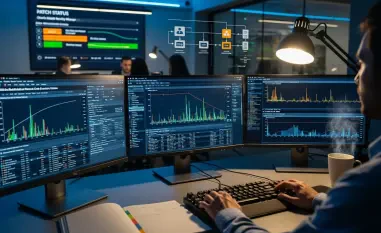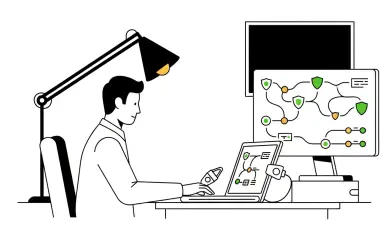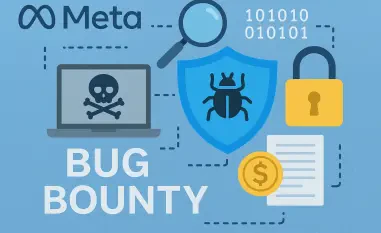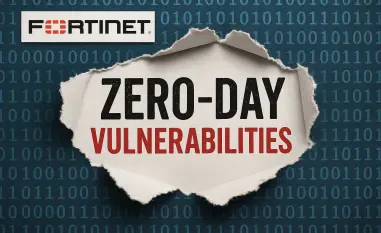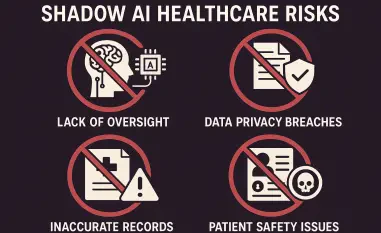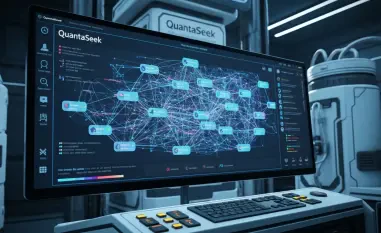In an era where digital threats evolve at an unprecedented pace, Singapore stands at the forefront of a technological revolution, with 82% of its organizations integrating Artificial Intelligence (AI) into their cybersecurity frameworks, reflecting a nation racing to fortify its defenses. This staggering adoption rate, drawn from a recent IDC survey commissioned by a leading global cybersecurity firm, paints a vivid picture of a country determined to combat increasingly sophisticated cyber threats. As businesses and government entities grapple with an escalating volume of attacks, AI emerges as both a shield and a challenge, reshaping how security is perceived and managed in this dynamic hub of innovation. This report delves into the transformative impact of AI on Singapore’s cybersecurity ecosystem, exploring trends, challenges, and the path forward for a more resilient digital future.
Overview of AI’s Role in Singapore’s Cybersecurity Ecosystem
Singapore’s cybersecurity landscape is undergoing a profound shift, driven by the rapid integration of AI technologies across various sectors. As a global financial and technological hub, the nation faces a barrage of cyber threats daily, prompting organizations to adopt advanced tools to safeguard critical infrastructure and sensitive data. AI has become a cornerstone in this battle, offering capabilities that enhance threat detection and response times while enabling organizations to stay ahead of malicious actors.
The significance of AI as a transformative force cannot be overstated. It empowers enterprises to move beyond reactive measures, adopting proactive strategies through predictive analytics and automated systems. This shift is evident in how companies now prioritize real-time threat management, leveraging AI to analyze vast datasets and identify patterns that human analysts might overlook. Key players like Fortinet are at the helm, driving innovation and providing solutions that cater to the unique needs of Singapore’s digital economy.
Beyond enterprises, the scope of AI integration extends to government initiatives and critical sectors such as finance, healthcare, and smart infrastructure. National programs aimed at bolstering digital security are increasingly incorporating AI to enhance public safety and trust. This widespread adoption reflects a collective recognition of AI’s potential to redefine organizational security strategies, positioning Singapore as a leader in leveraging cutting-edge technology to combat cyber risks.
Trends and Developments in AI-Driven Cybersecurity
Emerging Technologies and Threat Dynamics
The rise of AI in cybersecurity is marked by groundbreaking technologies like Generative AI (GenAI), which is being harnessed for advanced threat detection, automated incident response, and identifying social engineering tactics. These tools enable security teams to update protocols dynamically and investigate anomalies with greater precision, reducing the window of vulnerability during attacks. However, the adoption of full automation remains limited due to lingering concerns over reliability and the need for human oversight.
A critical aspect of this technological wave is the dual nature of AI, serving as both a defensive mechanism and a tool for cybercriminals. Attackers are exploiting AI to craft sophisticated, elusive threats, including deepfake-driven scams and automated malware campaigns. This reality underscores an ongoing arms race in cyberspace, where adaptability and speed are paramount for defenders aiming to counter these evolving risks.
Market drivers such as the demand for rapid response and predictive capabilities are shaping the direction of AI-driven security. Opportunities for innovation abound in areas like behavioral analytics, which can pinpoint insider threats, and automated incident response systems that minimize damage. These advancements highlight the potential for AI to not only react to threats but also anticipate them, fundamentally altering the cybersecurity paradigm in Singapore.
Market Insights and Growth Projections
Data from the latest IDC survey reveals that 82% of Singaporean organizations have embedded AI into their security operations, a clear indicator of its critical role in modern defense strategies. Yet, this progress is tempered by a sharp rise in AI-powered attacks, with 52% of respondents reporting a twofold increase in threat volume and 42% noting a threefold surge. These statistics illustrate the growing complexity and frequency of cyber risks facing the nation.
Budget trends further reflect the prioritization of cybersecurity, with 86% of organizations increasing their spending, though most increments remain modest at under 5%. Investments are shifting toward high-impact areas such as identity security and cloud-native protection, signaling a move from broad infrastructure upgrades to targeted, risk-centric solutions. This cautious financial approach balances the need for innovation with fiscal responsibility.
Looking ahead, AI is poised to redefine security operations over the next 5 to 10 years, from 2025 onward. Experts predict that advancements in machine learning and automation will enable more seamless integration of security frameworks, reducing operational complexity. As organizations continue to embed AI across critical functions, the focus will likely shift toward building smarter, more adaptive systems capable of outpacing emerging threats.
Challenges in Adopting AI for Cybersecurity
The integration of AI into cybersecurity, while promising, is fraught with significant hurdles that organizations in Singapore must navigate. A primary obstacle is understaffing, with only 6% of the workforce dedicated to internal IT, and an even smaller fraction focused on security-specific roles. This scarcity of talent creates gaps in expertise, hindering the effective deployment of AI tools and leaving systems vulnerable to exploitation.
Operational strains exacerbate these challenges, with cybersecurity teams often facing burnout due to overwhelming workloads and a lack of specialized leadership. Less than 15% of organizations employ a Chief Information Security Officer (CISO), and dedicated threat hunting teams are present in just 6% of cases. These deficiencies in structure and support contribute to reduced effectiveness, underscoring the urgent need for strategic workforce development.
Moreover, AI-powered threats exploit visibility and governance gaps, posing additional difficulties for defenders. Addressing these issues requires innovative solutions, such as enhanced training programs to build specialized skills, better resource allocation to alleviate team stress, and fostering greater trust in automated systems. Overcoming these barriers is essential for organizations to fully harness AI’s potential while mitigating associated risks.
Regulatory and Compliance Landscape for AI in Cybersecurity
Singapore’s robust regulatory framework plays a pivotal role in shaping the adoption of AI in cybersecurity. Laws and standards governing data protection and privacy, such as the Personal Data Protection Act, mandate strict compliance, compelling organizations to align their AI strategies with legal requirements. These regulations ensure that technological advancements do not compromise user trust or data integrity.
Compliance significantly influences organizational approaches, particularly in the integration of security architectures like Zero Trust, which emphasize continuous verification to prevent breaches. Businesses are compelled to adopt AI tools that not only enhance security but also adhere to stringent guidelines, balancing innovation with accountability. This regulatory oversight fosters a culture of responsibility within the industry.
Government initiatives and partnerships further bolster a secure digital environment by promoting collaboration between public and private sectors. Programs aimed at enhancing national cybersecurity often incorporate AI, driving collective efforts to address systemic vulnerabilities. This supportive policy landscape ensures that Singapore remains a safe haven for digital transformation, encouraging the responsible use of advanced technologies.
Future Outlook for AI in Singapore’s Cybersecurity Sector
The horizon for AI in Singapore’s cybersecurity sector is brimming with potential, as emerging technologies like advanced machine learning models and automation promise to further enhance defensive capabilities. These innovations could streamline threat identification and response, offering unprecedented levels of precision. However, they also introduce complexities that require careful management to avoid unintended consequences.
Market disruptors, such as the intensifying competition between defenders and attackers leveraging AI, are set to redefine the cybersecurity battlefield. This ongoing struggle drives both innovation and risk, necessitating continuous adaptation. Additionally, growth areas like cloud-native protection, identity security, and vendor consolidation—with 70% of organizations considering this approach—point to a future of streamlined, integrated security ecosystems.
Global trends, economic conditions, and technological breakthroughs will undoubtedly influence Singapore’s trajectory in this domain. As the nation aligns with international best practices, the focus on resilience and adaptability will shape investment priorities. The convergence of these factors suggests a cybersecurity landscape that is both challenging and ripe with opportunity, demanding foresight and agility from all stakeholders.
Conclusion and Strategic Recommendations
Reflecting on the insights gathered, it is evident that AI has carved a transformative path in Singapore’s cybersecurity landscape, balancing immense benefits with formidable challenges. The widespread adoption, workforce dynamics, and rise of AI-powered threats underscore a pivotal moment in the nation’s digital evolution. These findings highlight the urgency of addressing systemic gaps while capitalizing on technological advancements.
Moving forward, organizations should prioritize actionable strategies to build resilience, such as investing in specialized talent to bridge skill shortages and focusing on high-impact security domains like identity protection. Embracing convergence through integrated frameworks and vendor consolidation could simplify operations, enhancing efficiency. Ultimately, fostering adaptive, smarter cybersecurity operations will be key to navigating the complexities of an AI-driven future, ensuring sustained protection in an ever-shifting threat environment.

